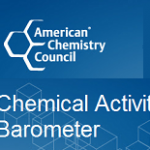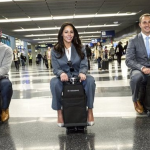The Tesla Model S1 (TSLA) has been rated by Consumer Reports magazine as the best car ever built, grabbing a coveted 100 score out of 100. They called the vehicle “perfect.”
It has been ranked by the US government Department of Transportation as the safest car ever built. Even competitors love the car.
So I decided to see if these vaunted claims were true and crash test my own $110,000 high performance Model S1 on public streets.
Actually, it wasn’t I who made the decision. It was the harried housewife with four screaming kids in the back seat speaking on a cell phone while driving who made that call.
She drove her GMC Silverado quad cab pickup truck straight into the side of my Tesla.
All I heard was a loud horn and a big slam as my car spun around 360 degrees. It was like going through aerobatic pilot school all over again.
I jumped out and asked if everyone was alright. They were.
All I found were four deadly silent boys and a woman crying over the phone to her husband about how his brand new truck had just gotten a small dent on the front bumper.
I inspected the barely visible damage, took pictures (see below), and calculated that her repairs would run about $1,500.
Bottom line on the safety issue? I didn’t even know that I had been in an accident. The vehicle is essentially a giant crumple zone. But it comes at a high price.
All four ultra thin racing tires tore off the wheels during the spin (expensive). That meant the custom painted 21-inch wheels had to scrape along the pavement, destroying them (more expensive). After teaching the AAA tow truck guy how to drive it, he hauled it away.
It was then that I learned about the arcane world of fixing Tesla’s.
Since the car is made out of aluminum, no neighborhood body shop can work on them, as it melts at a much lower temperature than steel. Standard welders are not allowed.
There are in fact only three specialized niche repair shops in the entire San Francisco Bay Area that can work with this ultra lightweight metal.
Brooks Auto Body of Oakland is one of them.
When I stopped by to talk about the job, the owner, a 6 foot 6 inch Korean guy, was in too much of a good mood. I would find out why later. Behind him were 16 other Tesla’s in varying states of disassembly.
News flash: These things are not cars. They are more like giant computers, with an 18-inch screen and a 1,200-pound battery. None of the components looked anything like car parts. Only the wheels belied any connection with transportation.
It took two months to finish the repairs. Since Tesla would only sign off on the car when it was perfect, it was sent back to the factory in Fremont three times for additional realignment and recalibration.














Leave A Comment